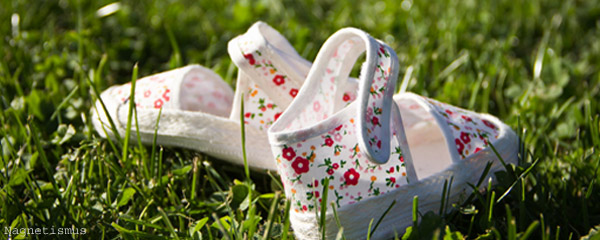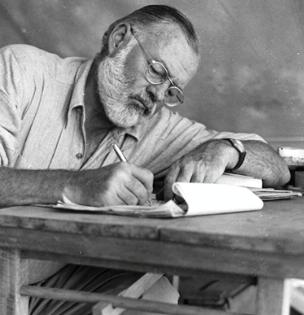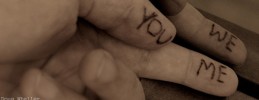
photo by Magnetismus
by Chloe Dalton
I had a fantastic English teacher. She kindled my love of short stories. However, one does not always fall in love with the most likely suitor. I fell in love with ‘Baby Shoes’:
For Sale. Baby Shoes. Never Worn.
I always remember my teacher offering these six words as the shortest story ever written. She credited them to Ernest Hemingway.
Disappointingly, even after extensive research, I have not been able to do the same. I can find little more than hearsay linking Hemingway to this fictional magnum opus, and can find no published record of it. However, I have loved the six-worded tale from the minute I heard it uttered. It is simple. Succinct. And each word genuinely has its place.
‘For Sale’ immediately begs the question of why the shoes are being sold. Even if we disregard the question of how little a pair of shoes would fetch, the advert immediately arouses the curiosity of the reader. Both ‘For Sale’ and ‘Never’ create a strong sense of finality. The shoes have never been needed, and will never be used again, at least, not by their current owner.
Shoes in themselves are laden with superstition, particularly new shoes. For centuries, ‘new’ shoes were hand-me-downs from the dead. Could this association be the source of the tale’s power? Are shoes intrinsically linked to hopes and aspirations; to a parent’s dream of first steps and dressing up their infant? Would the story have left the reader feeling differently had it read: ‘For Sale. Baby bath. Never Used.’?
 Even the word ‘baby’ has a whole host of emotive associations. How differently the piece would have read had the word ‘baby’ been substituted for ‘child’ or ‘toddler’. A baby of course symbolises innocence, hope and purity.
Even the word ‘baby’ has a whole host of emotive associations. How differently the piece would have read had the word ‘baby’ been substituted for ‘child’ or ‘toddler’. A baby of course symbolises innocence, hope and purity.
There’s no denying that each one of the six words has been carefully selected. But the words are merely a launch for the reader’s imagination.
I was three years old when my younger sister passed away. My memories of this terrible time are hazy, and I am mildly ashamed to admit that any memory of her face is vastly surpassed by my memory of her shoes…
The shoes were crafted from a red, velour-esque material. I loved them. For many years, I kept them in my bedroom, allowing a layer of dust to gather on the pristine velour. I could not stand the idea of feet dirtying their insides, or of gravel scuffing the soles.
When I heard ‘Baby Shoes’, I immediately thought of those tiny red shoes and felt a twang of sadness for the infant feet they had never clad. Of course, as the author intended, I had woven my own story through the sparse loom that was the narrative.
There are a million reasons why the baby shoes might never have been worn. The shoes might never have fit. The child might have had too many pairs. The shoes might not have been to the mother’s taste. But the amazing thing about ‘Baby Shoes’ is its ability to make us imagine between its lines. I was overwhelmed at the number of articles and forum debates dedicated to this six-word story and its putative author. It has even been hailed as Hemingway’s greatest work.
Whoever the author, ‘Baby Shoes’ will remain an anthem to ‘less is more’. It is a story that comes alive only in the co-creation between author and reader, and celebrates, above all, the power of suggestion.

